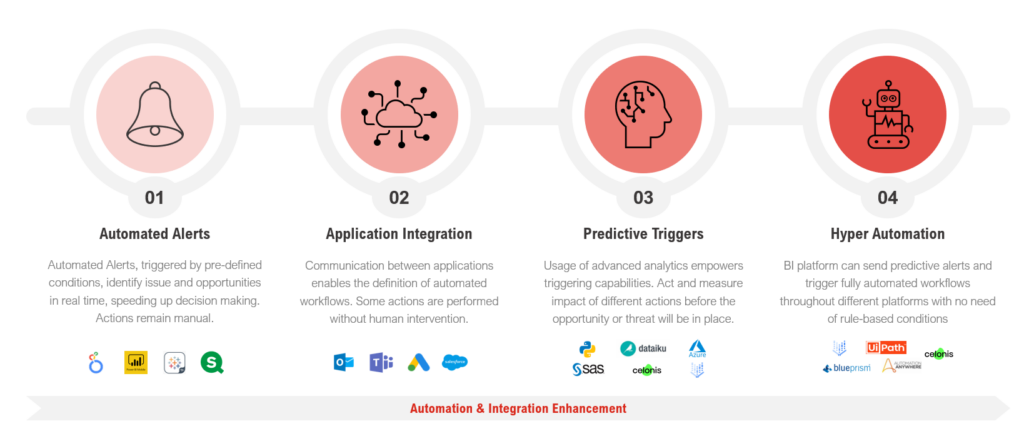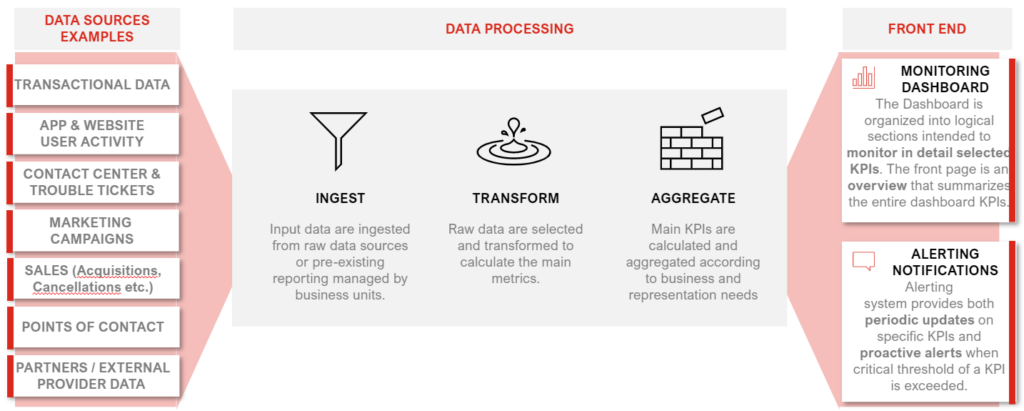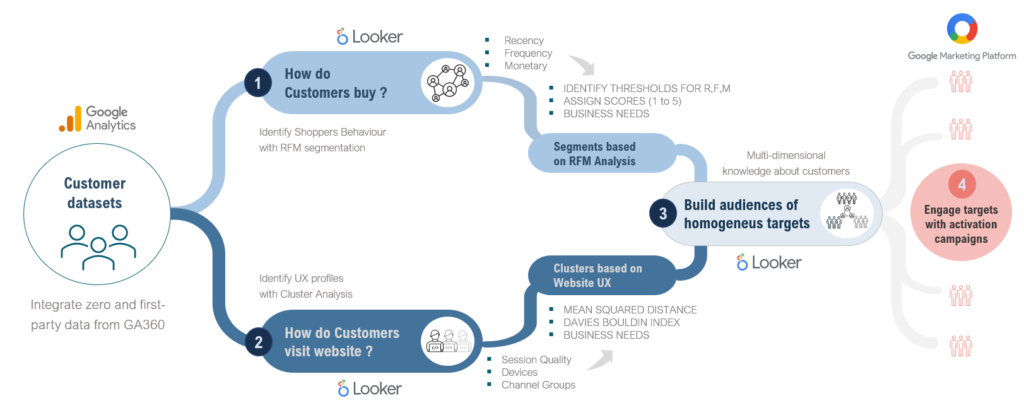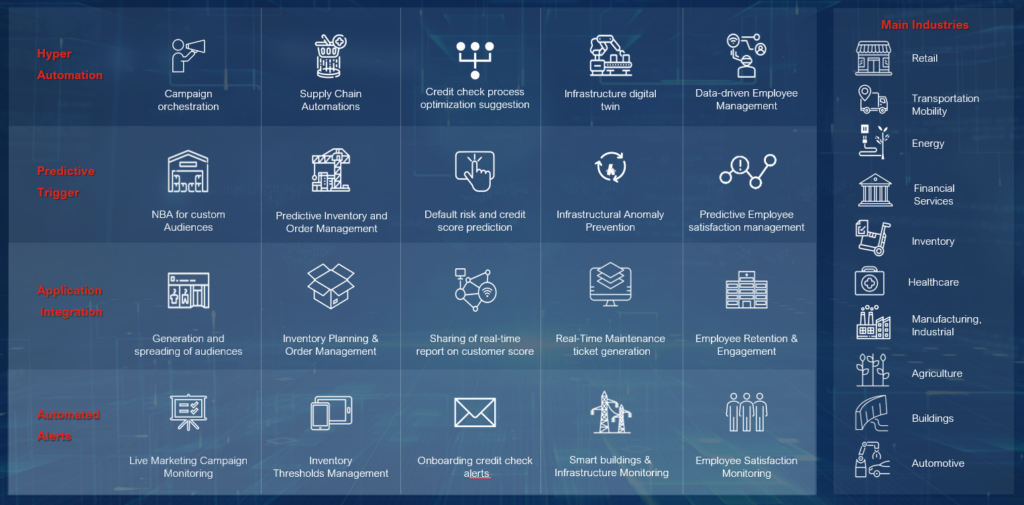AUTHORS

Victor Bueno
Augmented BI Community Leader
@BIP xTech

Edoardo Rossi
Augmented BI Specialist
@BIP xTech

Beatrice Riccardi
Augmented BI Specialist
@BIP xTech
Introduction
 Think about the innovation brought by GPS technology introduction. Before GPS, people relied on maps or physical guides, written indications, and their own sense of direction to navigate. This often resulted in getting lost or missing important turns and made travel, especially in unfamiliar locations, more challenging.
Think about the innovation brought by GPS technology introduction. Before GPS, people relied on maps or physical guides, written indications, and their own sense of direction to navigate. This often resulted in getting lost or missing important turns and made travel, especially in unfamiliar locations, more challenging.
Thanks to the introduction of GPS technology, satellite navigation (sat nav) systems were born, which provide more precise, real-time, turn-by-turn indications and help people to reach their destinations faster and more efficiently. With this technology people can avoid getting lost and avoid traffic, knowing that they have a reliable tool to help them reach their destination.
Another important innovation is autonomous vehicles that, by retrieving information from GPS and other advanced systems, can revolutionize the driving experience and habits of people. Autonomous vehicles do not only suggest the best route, but also make decisions and take the resulting actions at the driver’s seat. For example, if a pedestrian is suddenly crossing the road, the car automatically brakes without the need for driver intervention.
Now, think about modern businesses submerged by complex technology, Big Data, tricky internal processes, and dynamic external factors impacting timing and quality of decision making. As people need sat nav to reach destinations, companies need help to optimize and automate decision-making. And radically speaking, the fully automation of business processes based on data and KPIs, the so called hyperautomation, could be compared with autonomous vehicles.
Besides differences of technology complexity and adoption in our daily lifes, the Active Intelligence allows businesses to speed up and improve decision making achieving desired goals more quickly and accurately. The most important objective to achieve for organisations adopting Active Intelligence is, in fact, the automation of tasks. In its last stage, Active Intelligence does not give you only directions and suggestions like a sat nav but reach objectives for you like an autonomous vehicle.
What is Active Intelligence
Traditional BI is oriented to provide insight and enable businesses monitoring but does not always drive actions, which are only normally performed through manual intervention. In this context, business users must handle different tools adding further steps and slowing down processes. These limitations are the prerequisite for the rise of Active Intelligence (AI).
So, Active Intelligence is the Augmented BI evolutionary path which incorporates activation functionalities, moving BI from an indirect to a direct impact on business. The final goal is not to be limited on monitoring and insight generation, but triggering immediate actions integrated with external systems. Due to its advanced capabilities, AI makes aware of and able to react immediately to opportunity and threats.
Active Intelligence is such a mix of Business Intelligence, Business Automation, APIs and low code platforms. An Active Intelligence system starts with BI data and, when triggers are fired, it can take a wide range of actions into other tools or platforms.
The competitive advantages of developing an Active Intelligence solution can be summarized in four areas:
- Dynamic alerting: Intelligent alerting notifies users and managers at the moment when potential issues or opportunities arise, allowing them to analyze further, make decisions,and act immediately.
- 3rd Party integrations: communication between different applications is enabled+. It means alerts and input data are sent to or sent by the BI platform.
- Low code automations: The majority of Automation can be done without code. The low code approach enables faster delivery of applications through minimal hand-coding, facilitating business users.
- Augmented analytics: Advanced Analytics capabilities allow to make predictive or no rule-based alerts and automated workflows.
To reach the top level of Active Intelligence, companies can improve their decision-making processes by enhancing their automation and integration capabilities. BIP identified an evolutionary framework of Active Intelligence based on four steps.

Automated Alerts:
Automated alerts in Business Intelligence refer to notifications or messages that are triggered automatically based on pre-defined criteria or conditions. They are designed to help organizations stay informed and take prompt action when important events occur.
In a business context, automated alerts can be used to monitor various metrics such as sales performance, customer behaviour, or supply chain performance. For example, an automated alert could be set to notify a manager when sales in a certain region fall below a certain threshold, or when the inventory level of a critical item drops below a certain level. This allows organizations to quickly respond to changes in business conditions and take corrective action if necessary.
Moreover, automated alerts can be delivered via various channels such as email, SMS, or push notifications, and they can be customized to suit the needs of users.
In conclusion automated alerts are a useful tool for organizations looking to stay informed and respond quicker to important events, but actions remain manual.
Application Integration:
Application integration is a crucial step in the Business Intelligence evolutionary roadmap as it enables organizations to connect BI tools to other systems, bringing data closer to decision and actions.
Integrating external applications with BI systems allows organizations to access different systems and departments in a centralized and unified way while visualizing data. This enhances the accuracy of decision-making and increase user capabilities.
An example of application integration can be the integration with communication tools like Teams, Outlook or even Jira. When dashboard issues are identified, it is possible to send a message on Teams developer channel or to open a new task on Jira by simply clicking a button in the dashboard. Another example could be, for Digital Marketing, the automated creation and sharing of audiences to advertising tools like Google Ads. More complex examples are those based on pre-defined triggers, e.g.: when critical stocks threshold is exceeded, a trigger occurs generating an action from BI tool to generate a new order for out of stocks products.
So, application integration enables organizations to automate business processes reducing manual efforts and freeing up time and resources for more strategic tasks.
Predictive Triggers:
Predictive triggers are the AI-driven evolution of triggers used for automated alerts: they are based on predictive models, which are used to identify future events or outcomes based on historical data and other relevant information. Predictive triggers help organizations to stay ahead of potential issues or opportunities, allowing them to take proactive measures to improve their performance.
For example, a predictive alert could point a sales manager to an imminent drop in sales, allowing him to act by preventing or mitigating the impact. In some cases, predictive alerts become real triggers for automated actions like, in sales manager case, reprogramming product orders based on demand forecast.
Predictive triggers can also help organizations optimize their operations by identifying inefficiencies or opportunities for improvement. For example, when a marketing campaign faces a low response rate, a predictive trigger could trigger a campaign change for better results.
In conclusion, predictive triggers are an important tool in Business Intelligence as they provide organizations with real-time insights into future events, allowing them to take proactive measures to improve their performance and achieve goals. They also help organizations to optimize their operations, make better decisions based on suggestions and automate preventive actions.
Hyper Automation:
Hyper automation is the last and most complex step for Active Intelligence evolution as it enables organizations to automate tasks, processes, and decisions at scale. By leveraging artificial intelligence, machine learning, and other advanced technologies, hyper automation allows organizations to automate repetitive and complex tasks, freeing up time and resources for more strategic activities.
Due to Hyper automation, Active Intelligence broaden its acting capabilities triggering fully automated workflows across different platforms with no need of rule-based conditions. The difference between this evolutionary step and the previous one, Predictive triggers, is that hyper automation increase integration and automation capabilities, and adds the intelligence factor: Active Intelligence could here take autonomous decision and trigger ad-hoc workflows
In conclusion, hyper automation is a crucial aspect of Active Business Intelligence as it enables organizations to automate tasks, processes, and decisions at scale, improving efficiency, accuracy, and agility.
To give more clarity on concrete examples of active intelligence application we present two cross-industry examples where we see an effective application of the approach.
Solution for Operational monitoring
For an important player in Financial Services and Logistic sector, BIP has developed a custom monitoring system for the top management. It provides a comprehensive and up-to-date view of the company activities to detect anomalous trends and execute fast-response actions. The system is based on three pillars: near real-time data retrieval, Integration of data coming from all business lines and implementation of alerting tool.
BIP supported the customer with an end-to end approach, covering the connection to data sources, data processing and front end.

Focusing on the front end, the solution is based on Power BI providing Interactive reports designed for specific business lines. In particular, for trouble tickets and phone calls to contact center, it was implemented an alerting system that creates two types of Teams notification:
- Periodic notifications Each 10/20 minutes a notification is sent into a dedicated Teams channel, providing additional details with respect of the line charts in the dashboard (e.g most opened type of tickets)
- Proactive alerting In case of critical values of specific KPIs (e.g. CC calls on wait) an alarm is sent with additional information. Periodically a reminder is sent until the values of the KPI are regular again.
Smart Audience
Leveraging on Active Intelligence capabilities, based on our experience with an European player in e-commerce and fashion industry, BIP developed an AI Based Audience Generator solution. The tool integrates zero and first-party data to perform AI based analysis regarding customers behaviour on purchasing and navigation; due to its functionalities, marketers can refine their audience creation process and automatically send user lists towards different activation channels.
Based on modern business intelligence platform, BIP’s solution empowers marketers providing an active intelligence tool to augment their capabilities to analyze customer data and execute marketing campaigns.

Our approach for the audience enrichment is based on four steps:
- Segment shoppers based on their behaviour Apply RFM algorithms on CB to segment it based on theiri Recency, Frequency and Monetary values
- Identify UX profiles with Cluster Analysis Use ML clustering models to analyze user behavior in terms of channels, engagement, device, etc
- Build audiences of homogeneous targets Combine RFM segments with behavioral clusters to select homogeneous targets
- Engage targets with activation campaigns Accurately define activation channels and push audiences with few clicks to launch high performant campaigns
Focusing on the fourth step, the core active intelligence functionality, its aim is to drive activation and directly impact conversion performance. Audiences can be pushed directly to activation channels, such as Google Marketing Platform, Google Ads and direct marketing channels or can feed Google Cloud Platform, BigQuery or CRMs to be distributed to orchestration platforms.
Where to start?
The market for business automation and API integration is growing faster as a result of the many advantages made available to businesses. Active Intelligence unifies those different disciplines with advanced analytics and business intelligence, becoming an essential factor for businesses to reach the edge of efficiency and bring decision making to the upper level.
However, Active Intelligence is a complex innovation and behind its great benefits there are specific capabilities that most businesses have yet to develop. On top of this, companies are still not aware of the potentiality of adopting Active Intelligence solutions.
At BIP, we see Active Intelligence being applied to different industries for different use cases, and those below are just a few examples.

BIP can help clients to start adopting Active Intelligence solutions: our approach covers end-to-end Active Intelligence project, going from the design of specific use cases based on client’s context to the development and release of solutions
BIP xTech, our Centre of Excellence in exponential technologies, leverage on technological competences and partnership with strategic vendors to engage hybrid-skill teams to support client in Active Intelligence Projects.
Please contact us if you need an insight on our end-to-end offering or you wish to have a conversation with one of our experts.
Disclaimer
In this article, some products/vendors have been mentioned as examples to illustrate some advanced functionalities. BIP, through our center of excellence in data technologies (BIP xTech), has partnerships with many of these vendors but, aligned with our vendor independence strategy, we maintain as technology agnostic and, therefore, we are able to recommend the best solution depending on the client need, leveraging on a group of experts certified in most of these technologies.
To request further information about our end-to-end offerings or to have a conversation with one of our experts, simply send an email to [email protected] with the subject “Active Intelligence”, and we will get in touch with you immediately.
REFERENCES
- https://www.bigdata4innovation.it/data-analytics/active-intelligence/
- https://www.qlik.com/it-it/active-intelligence
- https://www.smeup.com/magazine/blog/active-intelligence-data-driven/
- https://www.cio.com/article/191833/unlocking-the-success-of-digital-transformation-with-active-intelligence.html
- https://blog.alertfusion.com/how-automated-alert-management-helps-improve
- https://www.gartner.com/smarterwithgartner/welcome-to-the-api-economy
- https://www.gartner.com/en/information-technology/glossary/hyperautomation
- https://www.ibm.com/cloud/blog/basics-of-business-automation
- https://www.ibm.com/topics/process-mining
Read more insights














































